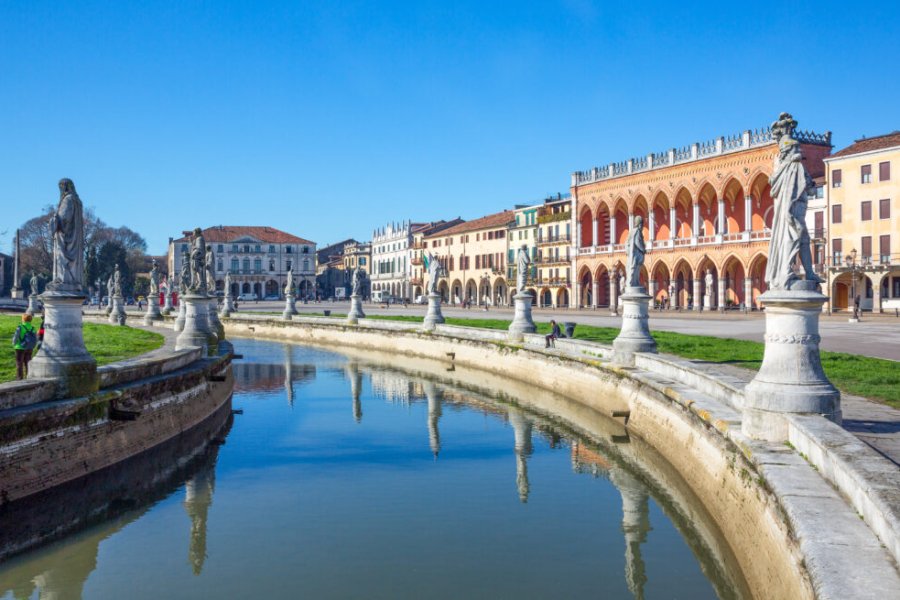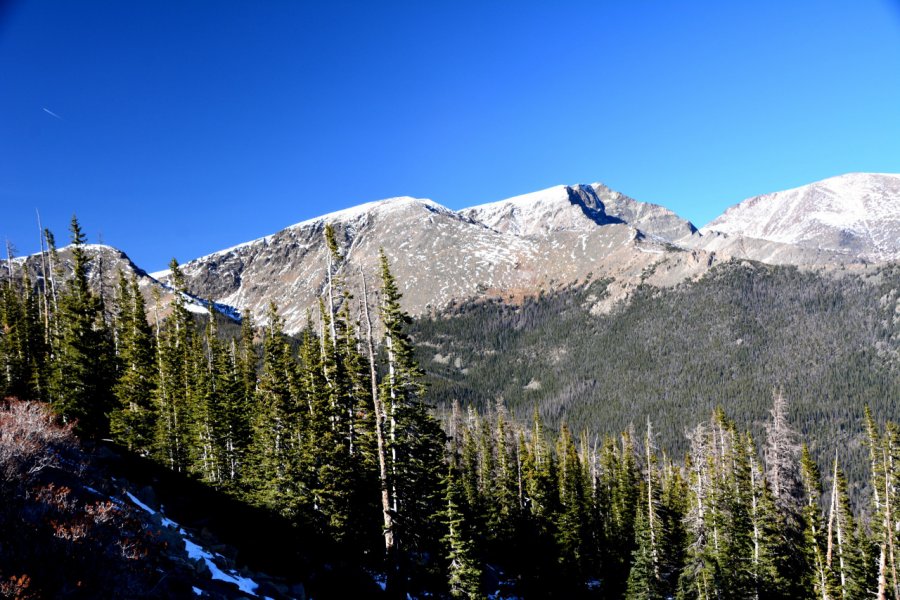Travel Guide Rocky Mountain National Park
Find an accommodation
Advertising
Rocky Mountain National Park covers part of the chain in Colorado. It contains many ecosystems ranging from riparian, with hydrophilic vegetation to high mountain areas. Very large (1,075 km 2), very green, especially if compared to many places in Colorado, it is a majestic and wild place for hiking. Between alpine tundra, green valleys and forest spaces, the park offers a varied landscape. It has many campsites and hiking trails.Rocky Mountain houses a very rich fauna, including brown bears, sheep and mule deer. Long Peak is 4,346 m high and is a classic mountaineering. Bear Lake and Dream Lake are beautiful mountain lakes, very popular.GeologyThe mountain chain, which was 70 million years old, formed largely during the Cretaceous period. Some, even older, parts date from several billion years, all resulting from the collision of North American and ocean plates. Erosion, including glacial erosion, has shaped the region, dig deep valleys and canyons and carved sharp peaks, mostly composed of metamorphic and magmatic rocks aggregated to some sedimentary deposits.HistoryBecause of its high summits and harsh winter climate, the Rocky Mountains region has always been an inhospitable land. Men began, however, to venture there almost 11,000 years ago hunting the bison but returning to winter in the more lenient plains. The Utes lived in the region until the late 1700 s. With the purchase of Louisiana in 1803, the US government took possession of this area and explorers and fur trappers began to explore it. Finally, the gold rush leads to the arrival of minors and prospectors and the creation of some camps such as the temporary city of Lulu City, located in what is now the northwestern part of the park. But harsh winters and the presence of bears and other wild animals do not promote sustainable implantation in the region. Finally, mountain water is an even more valuable resource than gold and the source of the Colorado River is diverted to feed downstream agricultural valleys. After the miners and farmers, it was the tourists who arrived, and in the 1900 s, we began to think about a way to preserve the fauna and flora of this savage and precious region.Several people work for the creation of a national park, including Enos Mills, naturalist and American author, the leading entrepreneur, the wealthy entrepreneur Freelan Oscar Stanley with the famous Stanley Hotel in Estes Park and the assistant secretary of state for Denver, James Grafton Rogers. Less known, Mary Bell King Sherman, married to a press tycoon and a staunch advocate of educating young generations by nature and the environment, also campaigned for the creation of the park. The national park was established on January 26, 1915. This recognition protects the southern part of the Rocky Mountains, which distinguishes itself by distinct fauna and flora from the northern parts. One of the main resources to conserve is water, tributary of the water divide where several major streams take their source like Colorado River or the Big Thompson River. Not to mention the tundra, the very fragile and unique altitude vegetation and all the park's living species.With increased park attendance, facilities develop like Visitor Centers and campsites. The development of the park is partly linked to the work of a work program put in place during the Great Depression by President Franklin Roosevelt. The Military Conservation Corps (CCC) allows for the creation of numerous roads, trails and buildings, as well as the protection of the park with fire and predators monitoring and tree planting. Thanks to the construction during the 1930 s of the Trail Ridge Road, many visitors can now access the park by car via this mythical road with spectacular views of the park's landforms.ClimateClimate is one of the main factors that makes the region inhospitable and the park is known for its extreme weather conditions with sudden blizzards, severe winds and heavy snow in winter. This is due, in part, to a collision of air masses and when the cold air of the North meets warm and humid air in the Gulf of Mexico, at the level of the Front Range, it causes intense snowfall. However, the conditions are quite different from one area to another. The highest regions receive, in particular, twice as much precipitation as lower elevations. The climate in winter, in the highest areas, is approaching Arctic conditions with temperatures up to almost -40 ° C at night. The park's climate is also marked by the impact of Continental Divide, which runs from northwest to southeast of the Rocky Mountains by cutting the park at its center, at its highest heights, into two distinct climates. The slope is, around Estes Park, more venturing, and the west slope in the Great Lake area in the western, more snow-cold and cold.NatureThe park has a very diverse wilderness and consists of four ecosystems: mountain, subalpine area, alpine tundra and riparian zone. Since 1976, the registration of the park to the World Biosphere Reserve by the United Nations protects its natural resources. A project that includes afforestation and reforestation of the park, an ecological program, water management and environmental education, among others. Observing wildlife is one of the essential activities and you will not tire of admiring its different vegetation, from fragile tundra to dense pine forests. There are also many animals. It contains nearly 300 species of birds and 70 mammals. There is a great chance that you will cross beavers, squirrels, but also number of deer, including biches, banges and elites. The park is also populated by predators, including black bears, coyote, lynx and puma; Grizzly bears and wolves disappeared from the park and only inhabited the northern part of the Rocky Mountains.
What to visit Rocky Mountain National Park?
Advertising
Suggested addresses Rocky Mountain National Park
Weather at the moment
Advertising
Organize your trip with our partners Rocky Mountain National Park
Transportation
Book your plane tickets
Car Rental
Boat rental
Accommodation & stays
Find a hotel
Holiday rental
Find your campsite
Tailor-made trip
Immersion travel
Services / On site
Activities & visits
Find a doctor
Find unique Stay Offers with our Partners
Pictures and images Rocky Mountain National Park
Other destinations nearby Rocky Mountain National Park
25 km away









